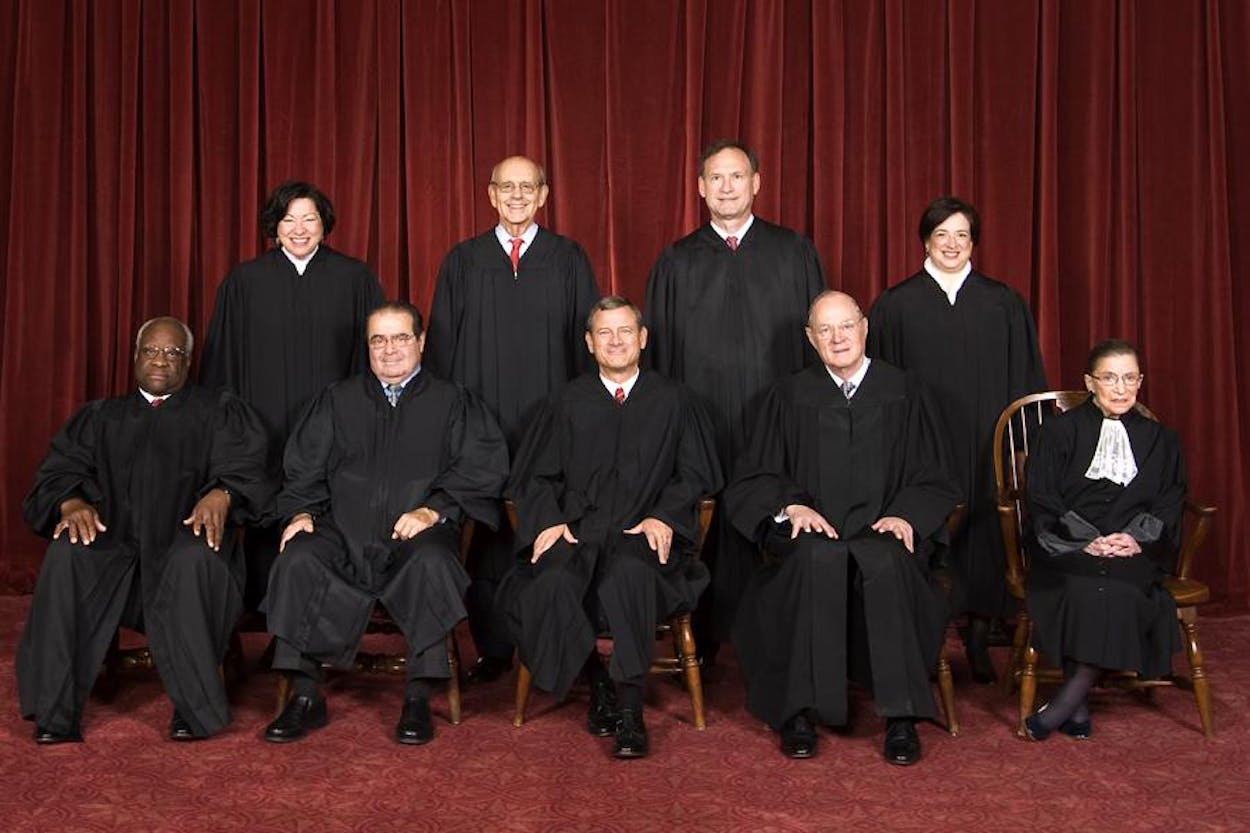Despite the best efforts of bloggers, journalists, and politicians from both parties, screenwriter William Goldman’s famous maxim about Hollywood—“nobody knows anything”—can also be applied to legislative and Congressional redistricting in Texas.
With three separate legal battles—one at the Supreme Court, one at a Federal District Court in Washington, and one at a Federal District Court in San Antonio—the possibility of two primary elections, and, at the moment, no actual districts for the candidates to file in, anybody who says they know what’s going to happen between now and January 9, the day the U.S. Supreme Court will hear the state’s appeal to stop the interim maps, is probably just postulating.
“It’s just like a snow globe that’s been turned upside down,” Austin lobbyist Bill Miller told Manny Fernandez of the New York Times. “All this stuff is in the air, and it’s slowly going to settle down, but you don’t where and you don’t know why.”
The interim maps were drawn up by a three-judge panel of San Antonio federal judges in place of the state’s own, which a Washington court ruled did not provide sufficient minority representation under the Voting Rights Act. On Friday the Supreme Court blocked the interim maps and scheduled a hearing for January 9. Eight days after the Supreme Court is scheduled to hear oral arguments, the federal lawsuit in D.C. to get the maps (belatedly) pre-cleared is scheduled to proceed. And today in San Antonio, the court will try to clarify what the current limbo means for the existing filing deadlines and election dates.
Got all that? In case you’re still lost, here’s a breakdown on the five things you need to know to follow the redistricting saga:
THE BASICS
Beyond all of the legal strategies and election day logistics, Ross Ramsey of the Texas Tribune explains the map battle and distills both sides of the argument:
Republicans, distressed by the San Antonio court’s maps, hailed the Supreme Court’s order as a victory. Their hope is that the lines drawn by legislators — or something close to them — will be used in next year’s elections. Those are the maps being defended by the state’s attorney general. Democrats and minority groups have been fighting those maps, saying they don’t fairly reflect the state’s growth over the last 10 years, 89 percent of which occurred in Texas’ Hispanic and African-American populations.
“The court thinks there are issues that are significant enough to merit further argument and resolution before Texas holds elections,” Michael Li wrote on the Texas Redistricting Blog.
And Lyle Dennison of the SCOTUS Blog opined that the court “appeared to have taken seriously and heard perhaps somewhat sympathetically the Texas lawyers’ argument that a 1982 Supreme Court precedent — Upham, et al., v. Seamon, et al. — strictly limits the power of a federal court to craft its own interim redistricting plan that deviates greatly from one drafted by a state legislature.”
WHAT DOES THIS MEAN FOR ELECTIONS?
The state has proposed holding two elections: one for the presidential primary and any other offices not affected by the court cases would still be on March 6, and a second set of balloting would occur May, the month run-offs are traditionally held.
But few at the county level seems to want that. “Hope they move entire primary to May rather than split it. Would cost counties twice as much to hold 2 primaries,” tweeted Dallas County Republican Party chairman Wade Emmert. Williamson County Republican Chairman Bill Fairbrother and Travis County Democratic Chairman Andy Brown expressed similar sentiments to Tim Eaton of the Austin American-Statesman.
Meanwhile, the Democrats are acting like the interim map and on-time election could still happen, while the Republicans are not. “The Texas Democratic Party is continuing to accept candidate filings until the Dec. 15 deadline unless they hear otherwise from the courts, spokeswoman Rebecca Acuña said. But the Republican Party of Texas instructed county GOP chairmen to ‘not accept applications for Texas House, Texas Senate or U.S. Congress,’” reported Shira Toeplitz of Roll Call.
WHAT DOES THIS MEAN FOR THE POLITICIANS?
Not knowing where district lines begin and end has been a nightmare for politicians. For instance, representative Aaron Peña of Edinburg was quick to assume the interim maps would hold, announcing his retirement from public service on Thanksgiving. (Peña, who switched to Republican party in the middle of his last term, knew he would lose in the redrawn district, which heavily favored Ds.) Sunday, Peña told the New York Times that he might reconsider.
And for the Democrats, the Austin American-Statesman had a story about how longtime Austin Congressman Lloyd Doggett should take notice that a segment of of his core constituents seemed ready to support representative Joaquin Castro of San Antonio if the two Democrats had faced each other in a primary for Doggett’s redrawn district. While the interim maps had removed that possibility, it might now be back.
THE BIG PICTURE
The Washington Post noted that Texas’ redistricting lawsuit could actually have an impact on the 2012 elections and beyond. For instance, if control of the U.S. House of Representatives is close, the three or four seats at stake in the different versions of the Texas map might tip the balance.
- More About:
- Politics & Policy







